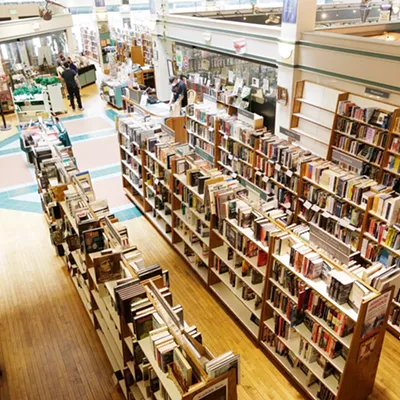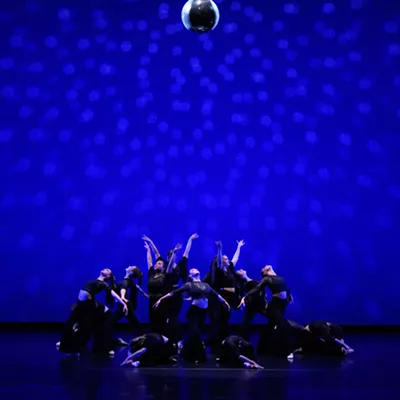Great holiday gatherings are about friends, family, and food, and the occasional navigation around taboo topics. Cranberry from a can, maybe, but jellied or whole berry? Sweet potatoes and mashed potatoes, right? The subject of pie — apple, pumpkin, pecan, all three, none at all — can reignite riffs that recur every November, yet unlike some publications, we're not afraid to endorse a superior candidate: apples.
This pomological powerhouse has fed Americans for hundreds of years, even through the bleakest times. Baked, boiled or eaten raw, apples provide huge health benefits from lowering cholesterol to reducing inflammation. And while cider induces a smile, vinegar enables long-term food preservation.
Apples are also key to understanding regional history, from its succession of homesteaders to the evolution of its apple-centric economy, according to so-called apple detective David Benscoter. Since retiring from federal law enforcement, Benscoter (whom the Inlander profiled in 2018 and 2023) has spent the past decade tromping through 100-year-old orchards and poring over old records to discover nearly 30 local apple varieties previously thought "lost."
It wasn't long before Benscoter had enough for a book, yet he needed backup.
"I would do a lot of work on the laptop, but it was all police-type reports," says Benscoter, formerly with the FBI and the IRS criminal division. "I did not have any type of a flair for writing."
But Linda Hackbarth, whose past historical books included Trail to Gold: The Pend Oreille Route, did. The two share a mutual involvement with the Whitman County Historical Society, which hosts Benscoter's nonprofit, Lost Apple Project.
"When I see someone so excited about something, I go, 'Oh, well, he's really into this,'" says Hackbarth, a retired Washington State University assistant professor of physical education whose 34-year teaching career concluded at Pullman School District.
Hackbarth joined Benscoter to co-author the recently published Lost Apples: The Search for Rare and Heritage Apples in the Pacific Northwest.
Lost Apples is encyclopedic, with four appendices comprising a quarter of the book's 288 pages. The largest section highlights regional cultivars, all 1,623 of them, from Abe Lincoln to Zuzoff, including their aliases and in which document their existence has been verified.
The book hardly reads like an encyclopedia, however, and is packed with concise, yet compelling historical vignettes. A fast, fun read, available at Auntie's Bookstore in Spokane or Sandpoint-based Keokee Books.
Benscoter thinks Lost Apples will appeal to both younger people interested in homesteading or preserving lost varieties, as well as older folks who remember vintage cultivars.
A good percentage of people attending the talks he's given over the years are senior citizens whose eyes light up when he talks about old apples, Benscoter says. "I can just see them being transported back to their mom's kitchen."
Unfortunately, advancing age is also a downside in the hunt for lost apples, says Benscoter, noting the decline in heritage trees, some of them dating back 150 years to the earliest white settlements. Another concern is a dearth of apple identification experts, many of whom are in their 80s.
"DNA testing is wonderful," explains Benscoter, "but if an apple is truly 'lost,' there's no DNA out there that we can compare it to."
Instead, he and other lost apple hunters rely on a handful of experts nationwide to correctly identify some 50 characteristics of a single cultivar.
"There's, you know, no one really coming up behind them," he says.
The most significant imperilment to lost apples, however, is climate, specifically drought, Benscoter says. Although homesteaders mostly knew to plant in ravines and other areas where water was more plentiful, two terribly dry years in a row could wipe out hundreds of thousands of trees, he says.
On the upside, there's a groundswell of interest in lost apples from researchers, like those at WSU, as well as historical societies, other lost apple hunters, orchardists and community members.
"Because if we don't get people, if we don't get articles like this come out," Benscoter says, "people won't contact us and say, 'Hey, we've got a tree out back.'"
Benscoter's enthusiasm for apples is more than skin deep. In addition to growing around 30 trees, each with eight to 10 cultivars grafted on them, he loves to eat apples.
"It is hard to beat a Honeycrisp right off the tree," says Benscoter, whose modest orchard includes so-called lost apples like Shackleford.
And when it comes to cooked apples, there's no contest.
"My wife makes a killer apple pie." ♦

























